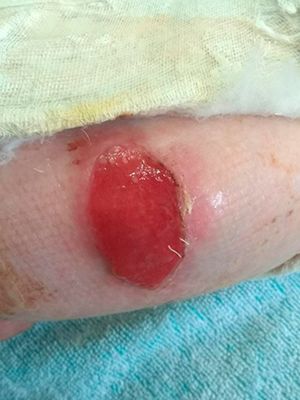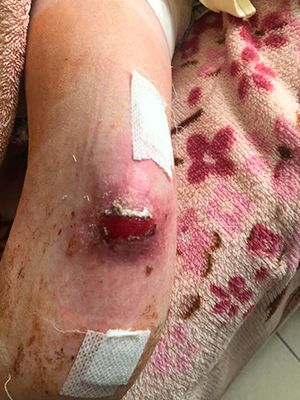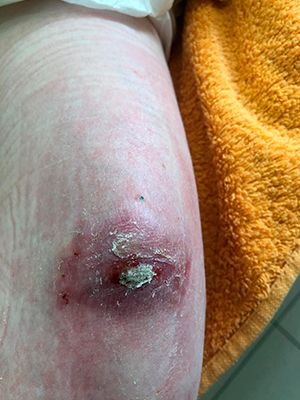- Usage
- Usage Cases
- Childhood cerebral palsy (disabled childhood).Open fracture of the lower left femur.
Case №49
Childhood cerebral palsy (disabled childhood).Open fracture of the lower left femur
Time period for the presence of a wound : 6 months
Odessa Regional Clinical Children's Hospital
-
Patient:
Boy
-
Age:
7 years old
-
Diagnosis:
Childhood cerebral palsy (disabled childhood).Open fracture of the lower left femur
Disability and problems
Facts
- More than 1 billion people, about 15% of the world's population, have some form of disability.
- The number of people with disabilities is increasing dramatically. This is due in part to demographic trends and the increasing burden of chronic health disorders.
- Almost everyone is likely to experience some form of disability - temporary or permanent - at some point in their life.
- People with disabilities have limited access to health services and significant unmet health needs.
- Where health services for people with disabilities exist, they are invariably of poor quality or limited resources.
- There is an urgent need to expand primary health care for people with disabilities, especially rehabilitation activities.
The forms of disability can be very different. Some disability-related health conditions result in poor health and significant health needs, while others do not. Article 25 of the UN Convention on the Rights of Persons with Disabilities (CRPD) affirms the right of persons with disabilities to the highest attainable standard of health without discrimination. However, the reality is that very few countries provide adequate quality services for people with disabilities.
Barriers to accessing health care
When trying to access health care, people with disabilities face a range of barriers, which include:
- Excessive cost
- Limited availability of services
- Physical obstacles
- Inadequate skills and knowledge of health workers
- Mainstreaming disability in the health sector
In the modern world, industrial injuries or banal situations on the roads lead more and more people to disabilities. But disability is different.But most of all, of course, situations are unpleasant when people break the spine, thereby receiving severe spinal cord injuries with all the ensuing consequences.
Disabled wheelchair
A wheelchair user is, first of all, a person with disabilities who uses a wheelchair. And in itself, a long stay in a wheelchair carries a number of problems for a person, which we will just talk about in our today's article.
Bedsores problem of wheelchair users
Bedsores are a problem of wheelchair users, yes, but not only them. Bedsores are a problem for any bedridden patient.
Briefly about what a pressure ulcer is, it is damage and necrosis of the skin, which appear as a result of prolonged squeezing. Many specialists face the question: how and how to treat a pressure ulcer in a patient, but there is no simple answer.The newest material Mirragen is a really effective remedy, which, in combination with traditional measures, can significantly alleviate the situation and help in the treatment of bedsores in a patient. Mirragen, thanks to its principles of action, is ideal for the treatment of chronic wounds and those that do not heal, which include bedsores in bedridden patients. Having received an injury, a person is forced to spend a long time in a hospital bed in one position, and this is very dangerous for the skin ...
That is why doctors advise to change the position of the patient's body at least once every two hours. Those who have experienced pressure sores resulting from prolonged stay in a hospital bed or sitting in a wheelchair as a result of a spinal cord injury are recognized as the number one problem.
Mirragen are micron and sub micron thick borate glass fibers. Visually and to the touch, the material resembles a cotton fabric, but its capabilities would have been called fantastic ten years ago.As a remedy for bedsores, it is advisable to start using Mirragen with the onset of the second stage of the disease, which is characterized by violations of the integrity of the skin and detachment of the epidermis. If the wound is open, then this not only causes an aggravation of painful sensations, but also threatens with infection.
Cooperate With Us
or via contact phones or email
-
Conveniently
By contacting only one supplier, our customers receive a wide range of products in the shortest possible time.
-
Simple
Our customers are only required to form an order for the supply of products, we will take care of all further tasks
-
Profitable
We save our customers money on import
and delivery taxes



